Hoppin’ and A-Stompin’ in Swingin’ Ol’ 1965!
DIRECTED BY BERT I. GORDON/1965
BLU-RAY STREET DATE: FEBRUARY 22, 2022/KL STUDIO CLASSICS
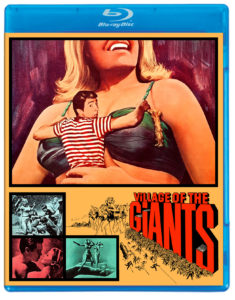
There are several aspects of 1965’s dopey and ridiculous Village of the Giants that some may find over the top. Thirty-foot-tall teenagers taking over the town? The teenagers preferring to hang around in a stuffy theater? The Beau Brummells performing live between two poles and a load bearing beam? Everyone calling Ron Howard “Genius”? It’s all here- and marginally more- in this bizarre H.G. Wells-gone-teen-beat drive-in happenin’ happening from director Bert I. Gordon.
As the director’s initials attest, when it came to scale-driven visual effects, Bert Ira Gordon was Mr. B.I.G. (The Amazing Colossal Man, Earth Vs. The Spider, and War of the Colossal Beast, to cite a few). That fun sobriquet came courtesy of none other than the famous Famous Monsters of Filmland publisher, Forrest J. Ackerman. The respect was obviously mutual, as one of the teen giants in this “village” is shown kicking back with an issue of the magazine. (A particularly Gordon-centric issue, at that!) Some of Gordon’s When-Giants-Attack! movies fare better than others in the visual effects department. Weirdly, they seem to trend increasingly negatively as time goes on. For example, his 1962 fantasy adventure The Magic Sword is a suitably impressive film in this department. (That film and its KL Blu-ray scored a positive review at ZekeFilm). Village of the Giants… not quite so much.
On that front, first things first… it should be clarified that KL’s Blu-ray release of Village of the Giants is rather towering. Though Gordon’s many trademarked integrated process shots harbor an inescapably flat garishness and are quite often marred from the outset with wear and tear, the disc represents the movie for what it is. In terms of its pop art color palate, it even represents the movie as what it aspires to be- which is a vibrant bit of rollicking morality served up as escapist fun. Film Historian Tim Lucas points out on his excellent commentary track that besides said fun, Village of the Giants also leaned into danger. The danger, that is, of teenage hedonism.
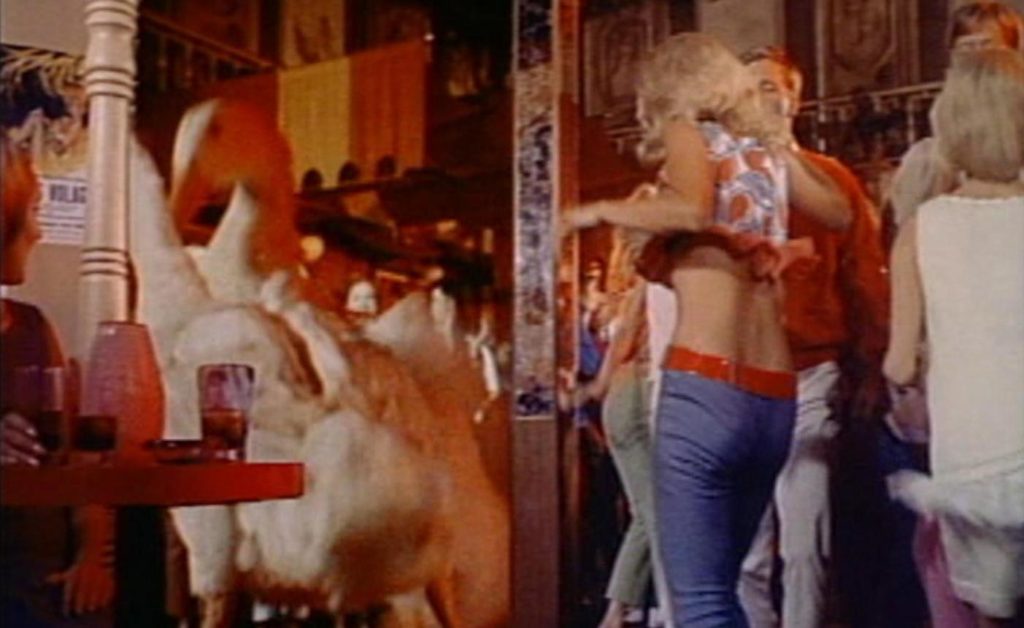
While still mostly operating on the “PG” level, Lucas is correct in stating that Gordon pushes boundaries immediately further than other makers of such films at the time. Namely, Disney and American International Pictures. Neither of those studios circa 1965 would begin a film with a prolonged sequence of eight rain-soaked horny teenagers rolling around together in the mud. From the start, Village of the Giants announces its risqué intentions. From time to time, it lives up to them.
From titles and log lines alone, however, it’s easy to suppose that both The Magic Sword and Village of the Giants are “kids movies” (in other words, entirely disposable screen fodder), and therefore, at the time, unworthy of serious post-production scrutiny. The Magic Sword, though, proving pure in heart and tasked to fake large mythical beasts as opposed to towering teenagers (not to mention assorted ducks, cats, dogs, and spiders), lands as a far more satisfying forgettable venture. If a comparison were to be made between Village of the Giants and any of the legion of VFX-driven “kids movies” of today, one suspects that it aligns most closely with Michael Bay’s Transformers: unengaging, yet busy to a fault. Also, inappropriately fixated on objectification. A dopey dude made to hang from an oversized co-ed’s bikini top might not read exactly the same as Megan Fox sexually contorting over a motorcycle in a movie about space robots based on toys, but again, the former was 1965.
The cultural emergence of “the teenager” was in full swing, and Village of the Giants is nothing if not a treatise on the threat of teenage sexuality unbound. Adults are virtually non-existent in this silly sci-fi Frankie and Annette knockoff. (To Gordon and company’s credit, they know full well that this is silly. As opposed to Michael Bay, who’s preoccupation with crafting dorky Transformers movies as badassery drains any would-be soul from the proceedings). It’s a kid (little bespectacled Ronny Howard, as the science wiz called “Genius”) who inadvertently sets the plot in motion, and likewise, is tasked with saving the day.
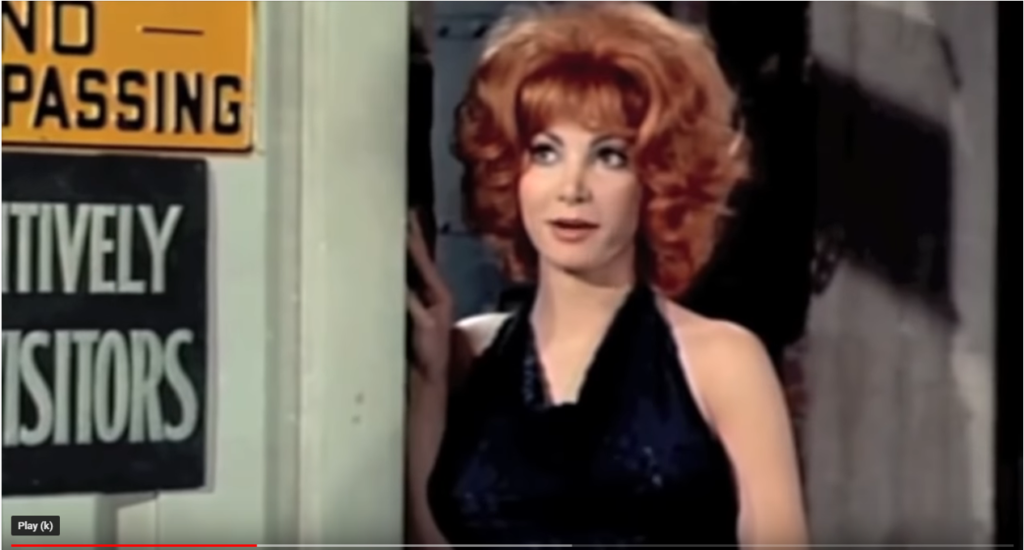
The very central cadre of cardboard teen characters is an intentional who’s-who of movie star offspring, including Beau Bridges as the biggest big baddie, as well as Ann Southern’s daughter Tisha Sterling, and Mickey Rooney’s son Tim Rooney. The main dude is played by then-embroiled aging youth star Tommy Kirk; his good and proper girlfriend is played by Charla Doherty. Toni Basil, the prominent choreographer and later singer of the 1982 hit “Mickey” is featured as a heroically wild dancin’ redhead. The Rifleman’s Johnny Crawford plays one of the non-enlarged teens that find themselves made to fight back like David versus Goliath. It’s with particularly demented glee that Joy Harmon plays the bikini clad gal who’s bust Crawford dangles from.
The cadre of cardboard teen characters hang out, party, bicker, grope, dance, mouth off, and roast and eat the giant ducks that the kid created. Glomming off the efforts of others is their whole purpose in life, and that ain’t good. When several of the pasty pack eat the newfangled growth “goo” (the accidentally invented “food of the gods”), they immediately decide to bully their way into power. Together, they will rule the sleepy (and made-up) town of Hainesville, California!!
What do they do with their all their power? Lay about in the theater wearing their drapes-turned-togas, reading Famous Monsters and demanding that the local police Doordash massive helpings of fried chicken and bottled Cokes to them. A sick display to behold… a sick display, indeed! Thematically, Gordon seems to be pulling a bit of teenage rebellion in his own right, making a ‘60s teensploitation picture that’s nothing but critical of teens. Aside from that, Village of the Giant’s ignorance of story would be egregious if the whole low-budget endeavor weren’t in the service of dim vapidity. When it’s not scoffingly slight, it’s square and off-kilter.
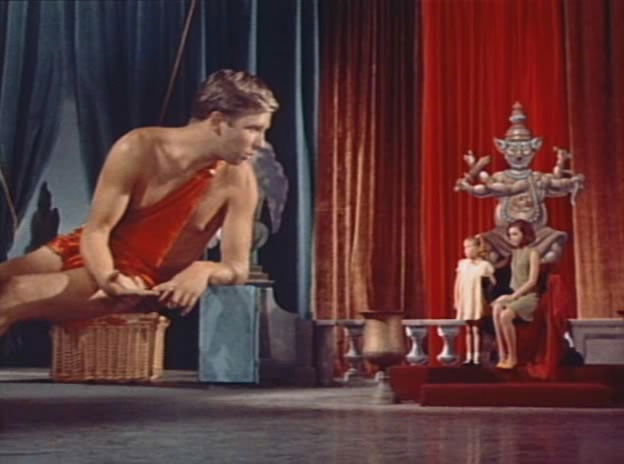
No teen truffle of the times was complete without a few awkwardly placed rock n’ roll singing sensations serenading the camera with their forgotten hit. Village of the Giants is no exception, making good with the film debuts of The Beau Brummells, Freddy Cannon, and Mike Clifford. Try as it might to one rockin’ flick, these names aren’t exactly of the marquee variety. The latter two were already three years out from their career peaks in pre-Beatles 1962.
As for The Beau Brummells, not only are they prominently relegated to playing in a club that has Whisky a Go Go signage, but reads as someone’s crammed basement, but they are tasked with selling the earthly hugeness of a pair of giant ducks that wander into the place to shake their tail feathers. It’s no wonder that the budding “Laugh, Laugh” musicians’ gawky responses (to what, in actuality, had to be Gordon telling them to tip their heads back and look amazed at the off-frame fowl) didn’t exactly earn them film careers. (Though, their main Wikipedia image? Them performing in close quarters under the staircase in this movie).
The biggest musical conundrum of Village of the Giants came for this reviewer via the film’s cool, bassy main them. After plenty of head scratching and an unsuccessful Siri inquiry as to what music this is, research prevailed with the answer: “The Last Race” by Jack Nitzsche, an instrumental single just prior the film’s release… and used by Quentin Tarantino as the theme for his only ill-fated film, Death Proof. Undoubtedly, this music is the best individual aspect of Village of the Giants.
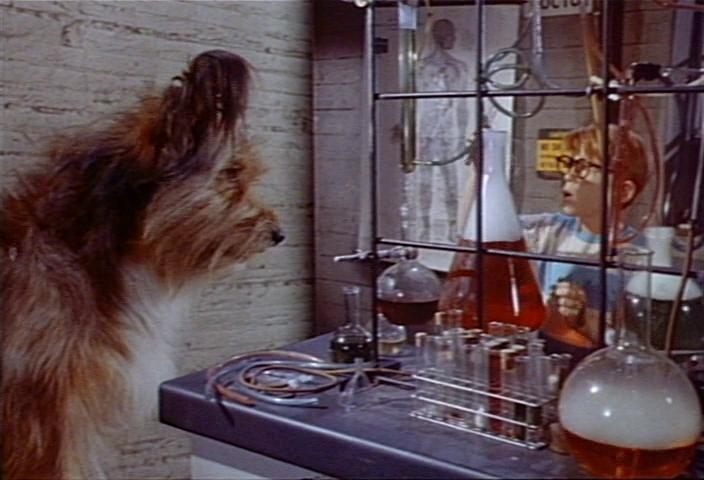
With its gargantuan dancing ducks and toga-wearing teens, Village of the Giants reputation as the kookiest teen movie of the 1960s should come as a surprise to absolutely no one. That it’s based on renowned science fiction author H.G. Wells’ novel The Food of the Gods and How It Came to Earth only makes the whole thing all the kookier. Gordon took another crack at the material in 1976 with AIP’s Food of the Gods, a boiled-down adaptation of only the first part of the author’s larger work. Although the director tended to stay in his lane as a maker of giant creature nonsense, by that time, he and every other genre filmmaker were preoccupied with ripping off Jaws and upping whatever exploitation ante that they could. Village of the Giants, for all its massive shortcomings, still manages to stand tall as the go-to go-go sci-fi feature of its bright day… hailing from a time just before the world had reason to freak out over bigger problems.

